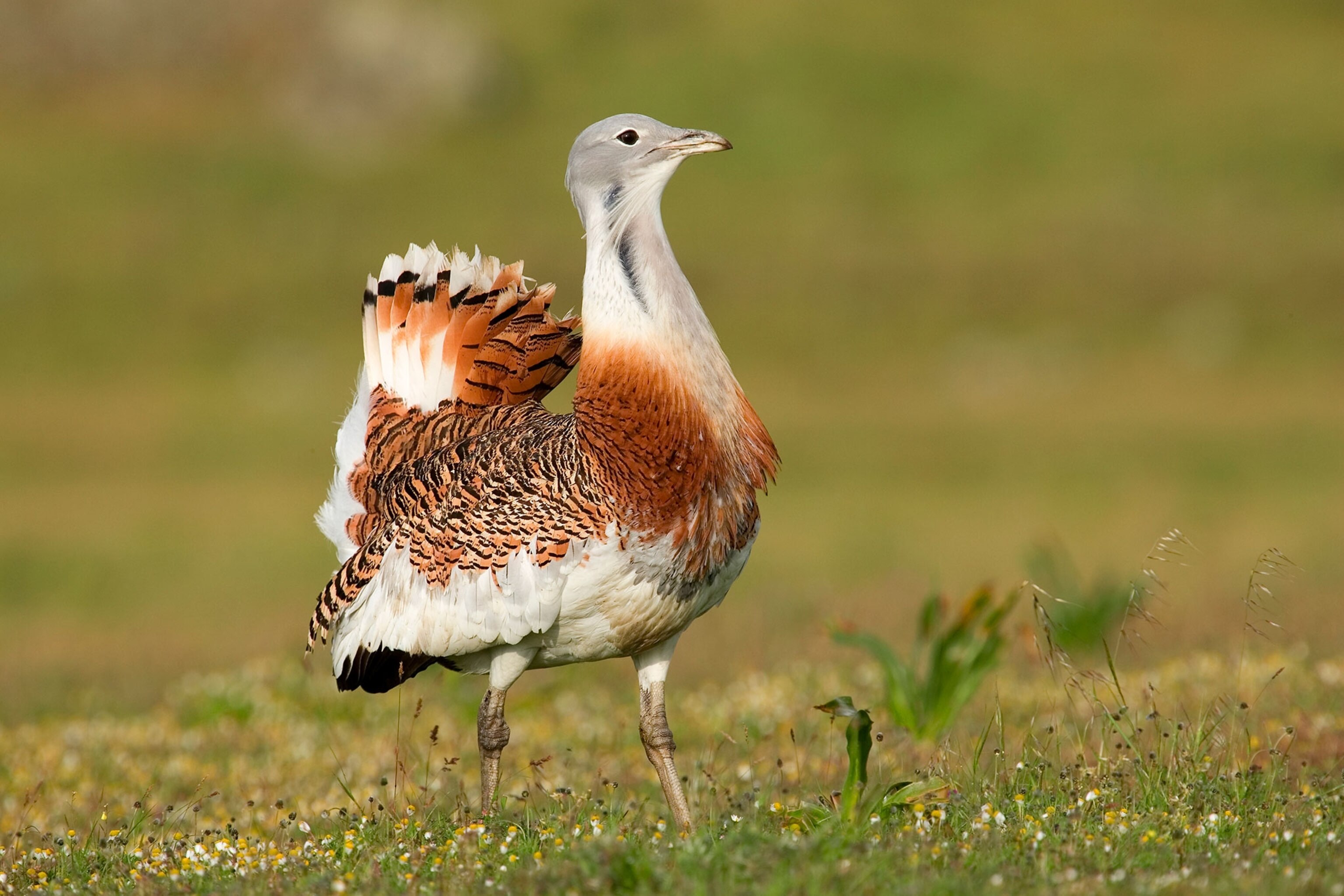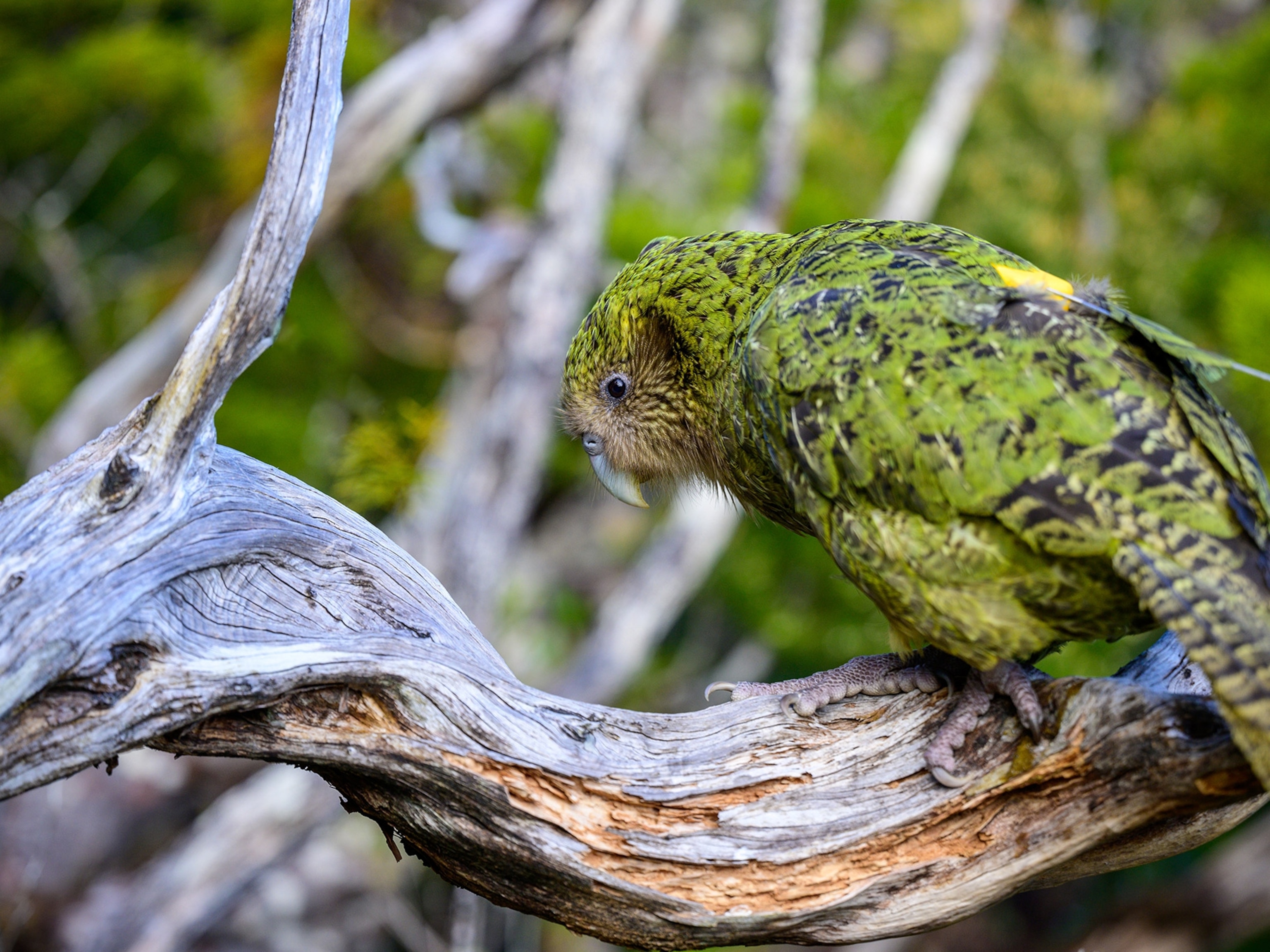
The Biggest Bird That Ever Lived and 5 More Bird Superstars
From the largest bird to the fastest moving bird, here are six stars of the bird world.
Birds come in all sorts of shapes and sizes: there are small birds and tall birds, short birds and big birds. Some birds can fly far distances across the Earth, and others don’t even have wings.
David Bird, an ornithologist who recently retired as director of McGill University’s Avian Science and Conservation Centre, has made it his life’s work to answer inquiries about these feathered flappers. Bird is the author of The Bird Almanac: A Guide to Essential Facts and Figures of the World’s Birds, and he’s been interested in the animals from a young age.
“I wanted to be a falconer but it just never worked. My mother wouldn’t let me have one in the house, and that was the end of that,” Bird says. As he got older he became interested in spreading the word about birds, particularly raptors and other birds of prey. But one day when out birding with a grad student, Bird spotted an Anna’s hummingbird, a stocky, 4-inch-long bird, and his perspective changed. (Related: read about how the world’s smallest birds survive the winter.)
“I was watching this little jewel in the sky and I was so impressed,” Bird says. With that, “I didn’t want to be a raptor bigot anymore.”














In lieu of denouncing so-called “raptor bigots,” here are six avian superstars among the birds of the world, past and present.
Year of the Bird
Ostrich: Tall, Dark, and Heavy
With its long neck and brown plumage, the ostrich is the tallest and heaviest bird on the planet. Females can grow up to six feet and weigh more than 200 pounds, while males can reach nine feet tall and roughly 280 pounds.
Ostriches’ eyeballs are nearly two inches across and bordered by a fan of sweeping lashes, making them the largest eyes of any land animal. The birds also have the largest eggs in the world. At more than three pounds, a single ostrich egg weighs as much as two dozen chicken eggs.
Because ostriches are so heavy, they can’t fly. Instead, the bird is built for speed—its powerful, two-toed legs can cover up to 16 feet in a single stride, making it the fastest running creature on two legs. Ostriches can sprint up to 43 miles per hour in short bursts, or maintain 31 mph speeds for longer periods of time.
Despite popular belief, ostriches don’t stick their heads in the sand when frightened. They can escape most situations by bolting, and use their flightless wings to keep their balance and change direction in motion. If that fails, ostriches will flop to the ground and remain still. From a distance, the bird’s light-colored neck and head blend in with its sandy savanna habitat, making it appear as though it has buried its head in the sand.
Great Bustard: Heavyweight Champion
Clocking in at around 35 pounds, the great bustard is often referred to as the “flying fortress,” Bird says, because it’s the heaviest flying bird. The largest great bustard recorded tipped the scales at more than 46 pounds—that’s slightly heavier than a full-size border collie.
Stately with a heavy build and robust plumage, grey-and-brown great bustards resemble large geese, but with longer legs and straighter necks. Male bustards, which are about 30 percent heavier than females, are identifiable by their prominent chests and necks, and their cocked tails.
Great bustards make their habitats in open, flat grasslands and steppes of Europe and southern Russia. They are known to be silent but can occasionally let out gruff, nasal barks when fighting with each other during breeding season.

“[Their weight is] just an adaptation to the kind of lifestyle that they lead,” Bird says. “Any of these birds that spend a lot of their time on the ground have less hollow bones.”
Dromornis stirtoni: The Original Big Bird
Up to eight million years ago, Dromornis stirtoni roamed the subtropical open woodlands of modern-day Central Australia. Until it went extinct, D. stirtoni was the largest bird ever, towering nearly 10 feet tall and weighing more than 990 pounds, which is the equivalent of a grand piano.
D. stirtoni had large, broad beaks, stubby wings, and well-muscled hind legs ending in hoof-like toes. They were likely fast runners, and their ladle-shaped bodies were covered in a coat of feathers.
At one point, researchers believed that D. stirtoni was related to other flightless ratites, like emus and ostriches. But today, evidence shows they evolved from waterfowl, such as ducks and geese. For some time, the eating habits of D. stirtoni were a mystery, too.
“They have this very powerful, sharp beak, and some scientists felt the bird was a carnivore,” Bird says. “But they looked at it and said the beak doesn’t have the specialization a carnivore would need.”
Today, most researchers believe the bird was a herbivore, munching mostly on tough-skinned fruits and seed pods.
Wandering Albatross: Frequent Flyer
Wandering albatrosses have the largest wingspan of any bird, at more than 11 feet across. Adults have white plumage, black wings, and webbed feet, along with tubular nostrils on either side of their hooked, pink bills. They weigh 17 to 25 pounds and they’re about three-and-a-half feet from bill to tail.
“[Wandering albatrosses are] best known for their huge flying capability,” Bird says. “They spend all their time in the Southern Ocean.”

Bird says the species has been known to circumnavigate the Southern Ocean three times each year, and according to some reports, a single bird once traveled as far as 3,728 miles—the distance from New York to Amsterdam—in 12 days.
Wandering albatrosses feed by swooping down and skimming the surface of the water, which is the same place where they roost after the sun goes down. They eat a diet of fish and squid, and will sometimes follow fishing boats to eat discarded fish waste. They’ve been known to gorge so much that occasionally, they have to float on top of the water and digest before they can fly again.
Giant Moa: Avian Skyscraper
For millions of years, the giant moa consisted of nine species of ostrichlike flightless birds native to New Zealand. While some species were about the size of a turkey, others stood as tall as 12 feet, Bird says, making it the tallest extinct bird.

Moas were mostly browsers and grazers, munching on seeds, fruits, leaves, and grasses. They were known to have swallowed four-inch stones to grind up their food, and females made one-egg nests in hollows in the ground. For millions of years, they marched through their habitat but suddenly went extinct about 600 years ago.
“When the Polynesians settled New Zealand, there were about 58,000 moas,” Bird says. But, “they went extinct around 1440. It’s just such a shame that they’re extinct.”
Peregrine Falcon: Speedy Feathers
The largest falcon over most of North America, peregrine falcons are crow-sized raptors with long, pointed wings and a long tail. They are the fastest moving bird in the world, but not to be confused with the fastest flying bird, Bird says. That title belongs to the red-breasted merganser.
“The peregrine falcon dive can go up to 320 kilometers [198 miles] an hour. It’s very, very fast,” Bird says.

Adult peregrine falcons sport a coat of blue-gray feathers with barred white underparts. Medium-sized flyers, they can grow 14 to 19 inches long and weigh roughly three pounds. The falcons have yellow feet with hooked claws and sharp beaks, which they use to hunt pigeons, shorebirds, and ducks. They sit on high perches, waiting for the perfect moment to swoop down after prey.
“They’ve got a little primordial tooth on their bills that distinguishes the falcons from the hawks,” Bird says.
At one point, peregrine falcon populations were threatened because chemicals such as DDT were making their eggs so fragile that they would crack when the birds went to sit on them. But today, with the passing of environmental regulations, peregrine falcon populations are thriving. They can be commonly seen on skyscrapers, water towers, cliffs, and other tall structures.
“Nowadays,” Bird says, “peregrine falcons have adapted to living in cities all over the world.”
Related Topics
You May Also Like
Go Further
Animals
- Soy, skim … spider. Are any of these technically milk?Soy, skim … spider. Are any of these technically milk?
- This pristine piece of the Amazon shows nature’s resilienceThis pristine piece of the Amazon shows nature’s resilience
- Octopuses have a lot of secrets. Can you guess 8 of them?
- Animals
- Feature
Octopuses have a lot of secrets. Can you guess 8 of them?
Environment
- This pristine piece of the Amazon shows nature’s resilienceThis pristine piece of the Amazon shows nature’s resilience
- Listen to 30 years of climate change transformed into haunting musicListen to 30 years of climate change transformed into haunting music
- This ancient society tried to stop El Niño—with child sacrificeThis ancient society tried to stop El Niño—with child sacrifice
- U.S. plans to clean its drinking water. What does that mean?U.S. plans to clean its drinking water. What does that mean?
History & Culture
- Gambling is everywhere now. When is that a problem?Gambling is everywhere now. When is that a problem?
- Beauty is pain—at least it was in 17th-century SpainBeauty is pain—at least it was in 17th-century Spain
- The real spies who inspired ‘The Ministry of Ungentlemanly Warfare’The real spies who inspired ‘The Ministry of Ungentlemanly Warfare’
- Heard of Zoroastrianism? The religion still has fervent followersHeard of Zoroastrianism? The religion still has fervent followers
- Strange clues in a Maya temple reveal a fiery political dramaStrange clues in a Maya temple reveal a fiery political drama
Science
- NASA has a plan to clean up space junk—but is going green enough?NASA has a plan to clean up space junk—but is going green enough?
- Soy, skim … spider. Are any of these technically milk?Soy, skim … spider. Are any of these technically milk?
- Can aspirin help protect against colorectal cancers?Can aspirin help protect against colorectal cancers?
- The unexpected health benefits of Ozempic and MounjaroThe unexpected health benefits of Ozempic and Mounjaro
- Do you have an inner monologue? Here’s what it reveals about you.Do you have an inner monologue? Here’s what it reveals about you.
Travel
- Follow in the footsteps of Robin Hood in Sherwood ForestFollow in the footsteps of Robin Hood in Sherwood Forest
- This chef is taking Indian cuisine in a bold new directionThis chef is taking Indian cuisine in a bold new direction
- On the path of Latin America's greatest wildlife migrationOn the path of Latin America's greatest wildlife migration
- Everything you need to know about Everglades National ParkEverything you need to know about Everglades National Park







